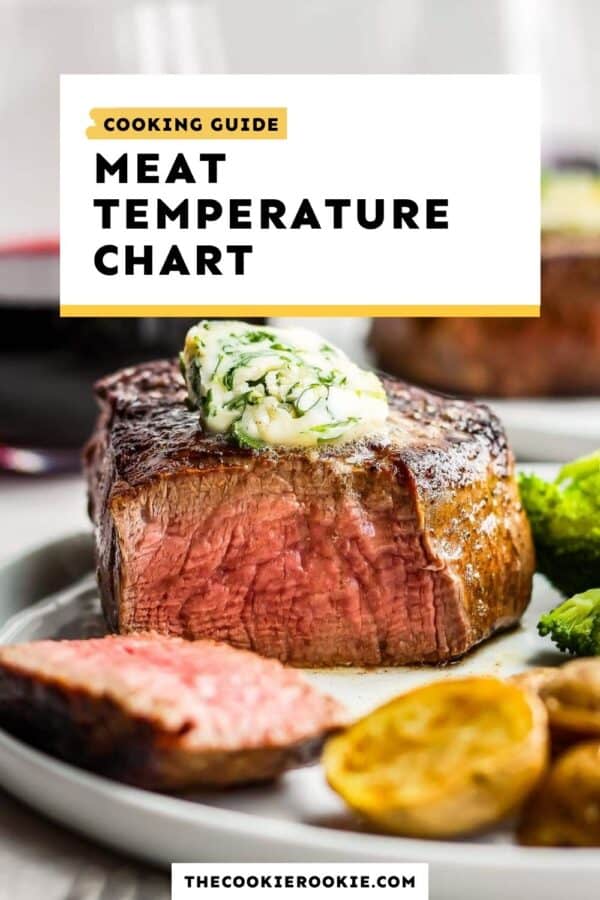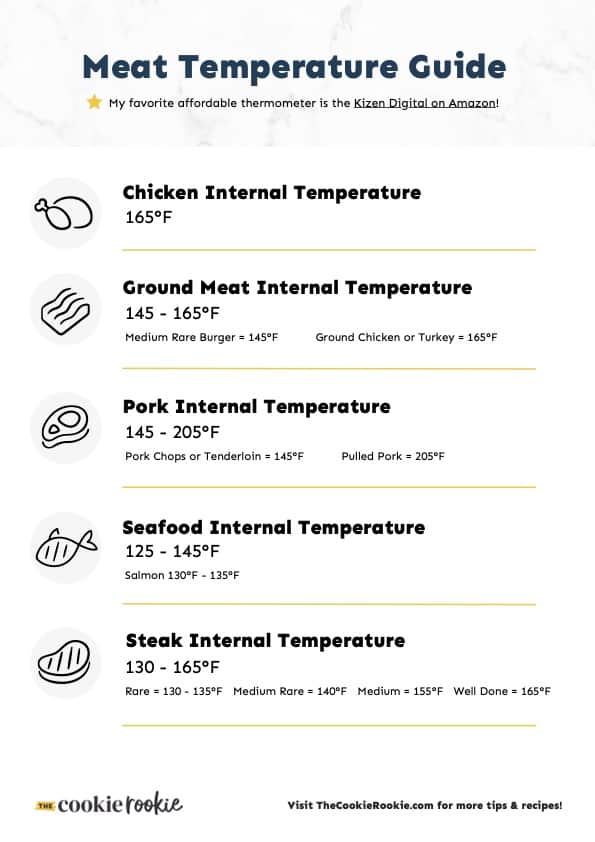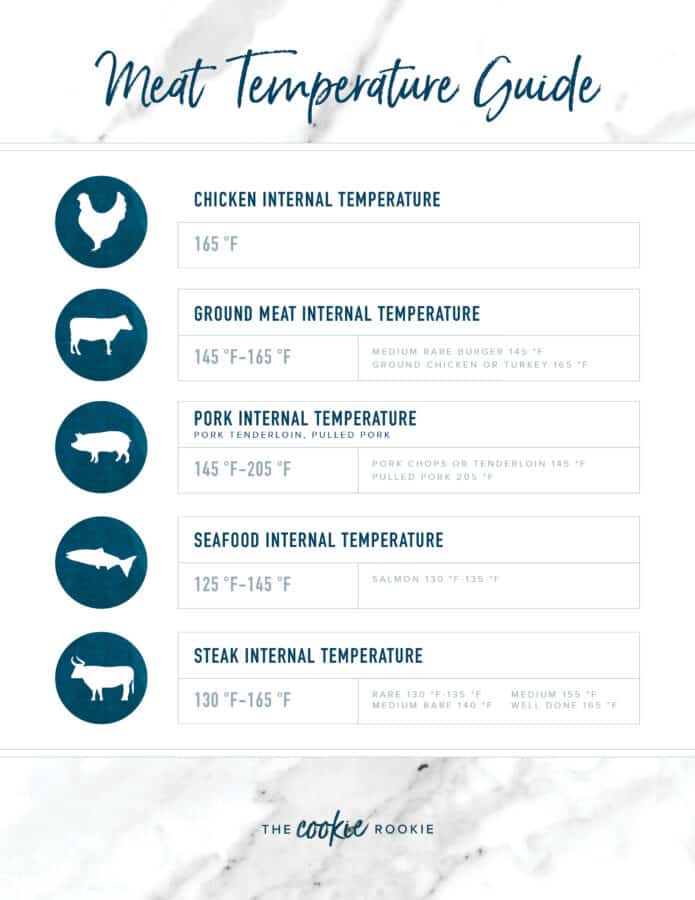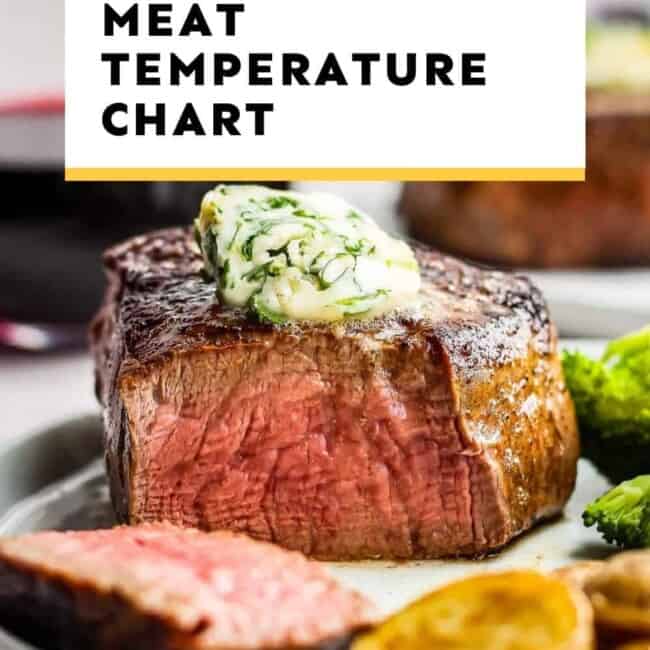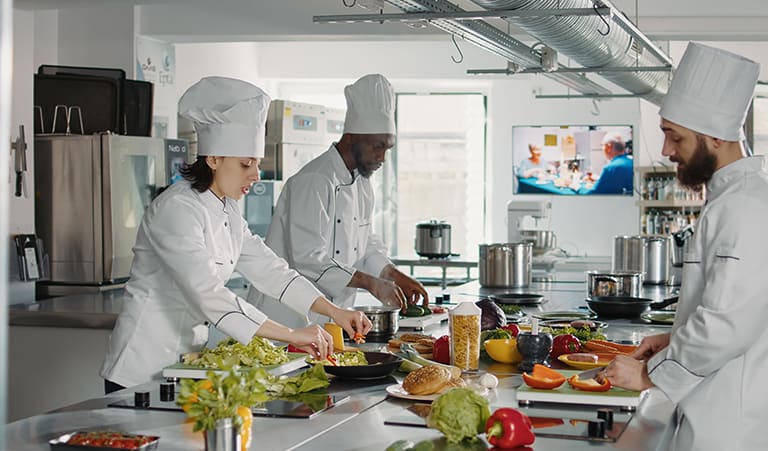This Meat Temperature Chart is helpful when cooking all kinds of meats! It’s so important to know the Steak (Beef), Pork, Fish, and Chicken Internal Temperatures when cooking on the grill, on the stove, or even in the oven.
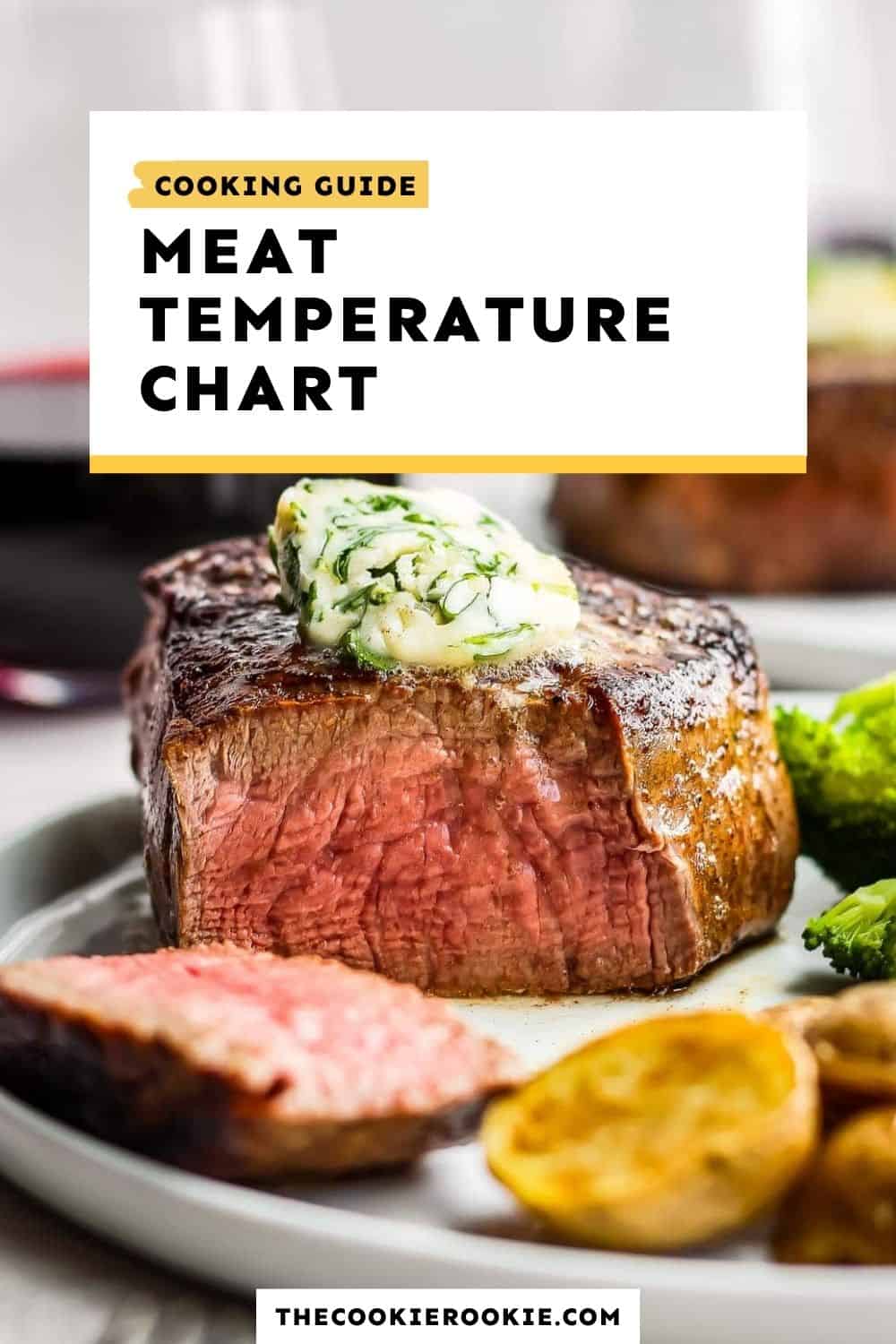
CLICK FOR FREE PRINTABLE
Free Meat Temperature Chart
Making sure you meat is properly cooked is essential to cooking safe and delicious recipes at home. Here you will find a FREE printable with shortcuts for knowing the best cooking temperatures of Chicken, Beef, Pork, Seafood, and more!
We have compiled all the info we have garnered over the years on the perfect internal temperatures for cooking meat! This easy printable will help you when cooking beef, steak, salmon, seafood, pork, and chicken at home. Internal Temperatures are so important for keeping your family safe and your food tasting good, especially with poultry! Sit back and relax, we’ve got you covered!
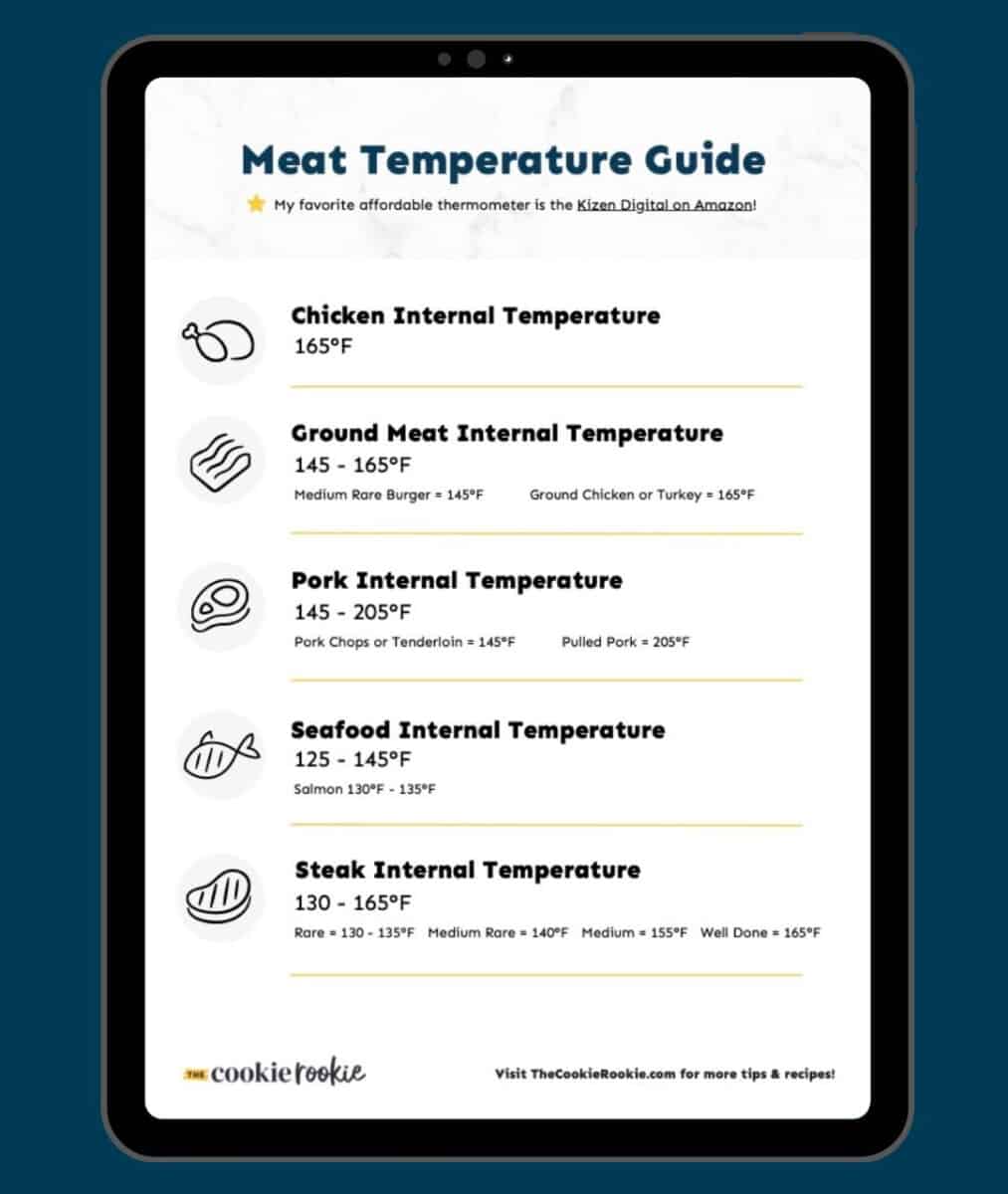
CLICK FOR FREE PRINTABLE
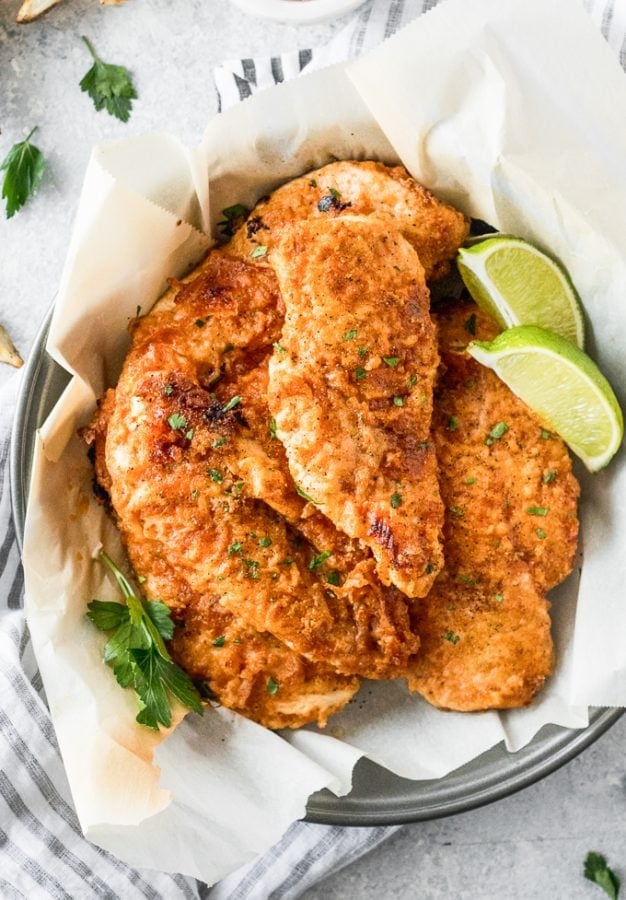
Chicken Internal Temperature: 165F
Cooking to the correct internal temperature is important, especially with chicken. The FDA is very clear about making sure you cook chicken to 165 F to avoid salmonella poisoning.
Recommended Chicken Temps:
| Type | Temperature |
|---|---|
| White Meat: | 165F |
| Dark Meat: | 170-180F |
| Ground Chicken: | 165F |
I recommend using a meat thermometer to make sure your chicken is fully cooked, but here are some extra tips to tell if it’s done:
- When you cut into the chicken, the meat is opaque. Typically the meat will be white, but a little pink is okay as long as the temp is 165F. Color doesn’t necessarily equal doneness.
- When you slice the chicken, the juices should run clear.
- The cooked chicken meat should feel firm, not jiggly or rubbery.
Some early signs of salmonella include diarrhea, chills, fever, and abdominal pain. If you fear you have food poisoning, you should always contact a doctor for further instructions.
Here are 10 of our favorite Chicken Recipes if that sounds good for dinner!
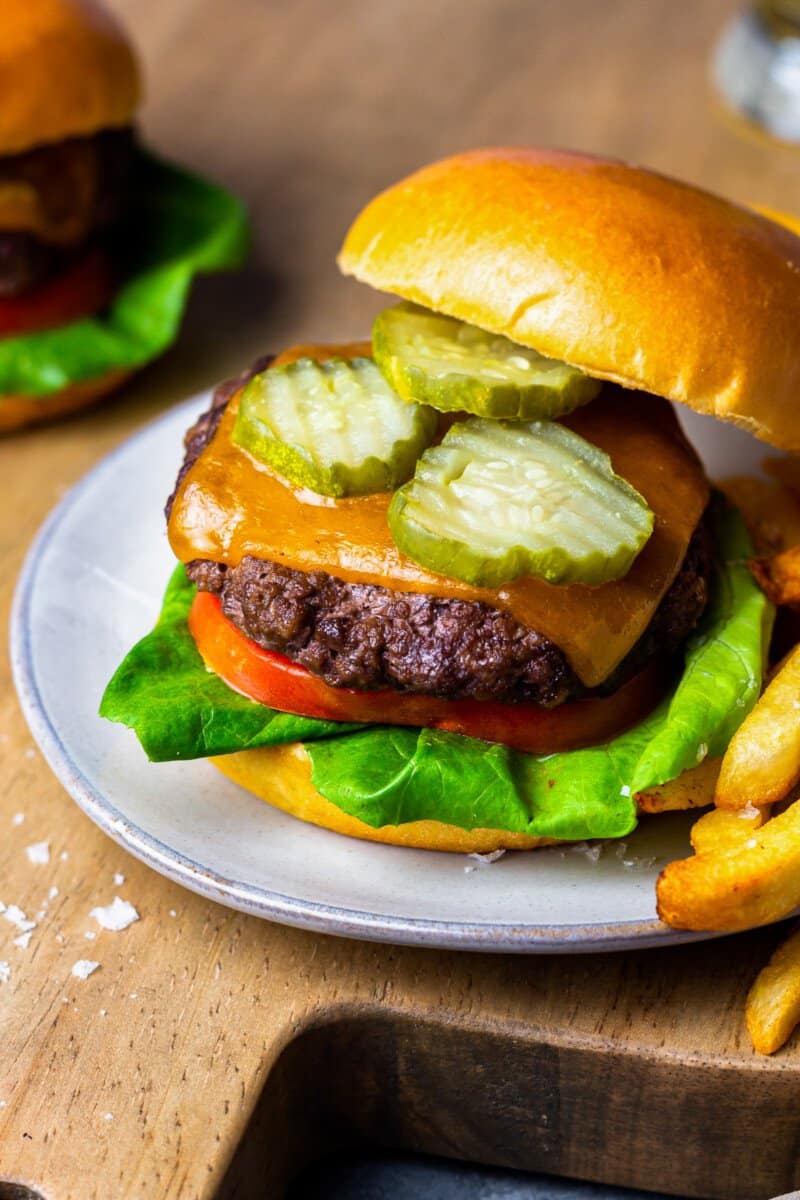
Internal Temperature of Ground Meat (such as burgers, meatballs, or meatloaf): 160-165F
When cooking any ground beef for recipes such as burgers, meatloaf, or meatballs, it is recommended that you cook to a minimum of 160F. While it is safe to eat beef and pork at lower temperatures, ground meat for burgers, meatballs, and meatloaf is safer (and tastier) when cooked to the recommended temperatures below.
Recommended Ground Meat Temps:
| Type | Temperature |
|---|---|
| Ground Beef: | 160F |
| Ground Pork: | 160F |
| Ground Chicken: | 165F |
| Ground Turkey: | 165F |
A medium-rare burger would be cooked to 145F if that’s what you prefer, but its safest to cook closer to 160-165F for ground meats. When meat is ground up, most of it is surface area, which exposes more of it to bacteria. So cooking it to a higher temp is recommended in order to kill all potential bacteria.
If you’re working with ground poultry (chicken or turkey), as outlined above, they should be cooked to a minimum of 165F.
QUICK TIP: When cooking with ground beef, remove from the stovetop or oven about 5 degrees under your desired internal temperature. That will help keep your recipe juicy and tender.
Here are 10 of our favorite recipes with ground meat!
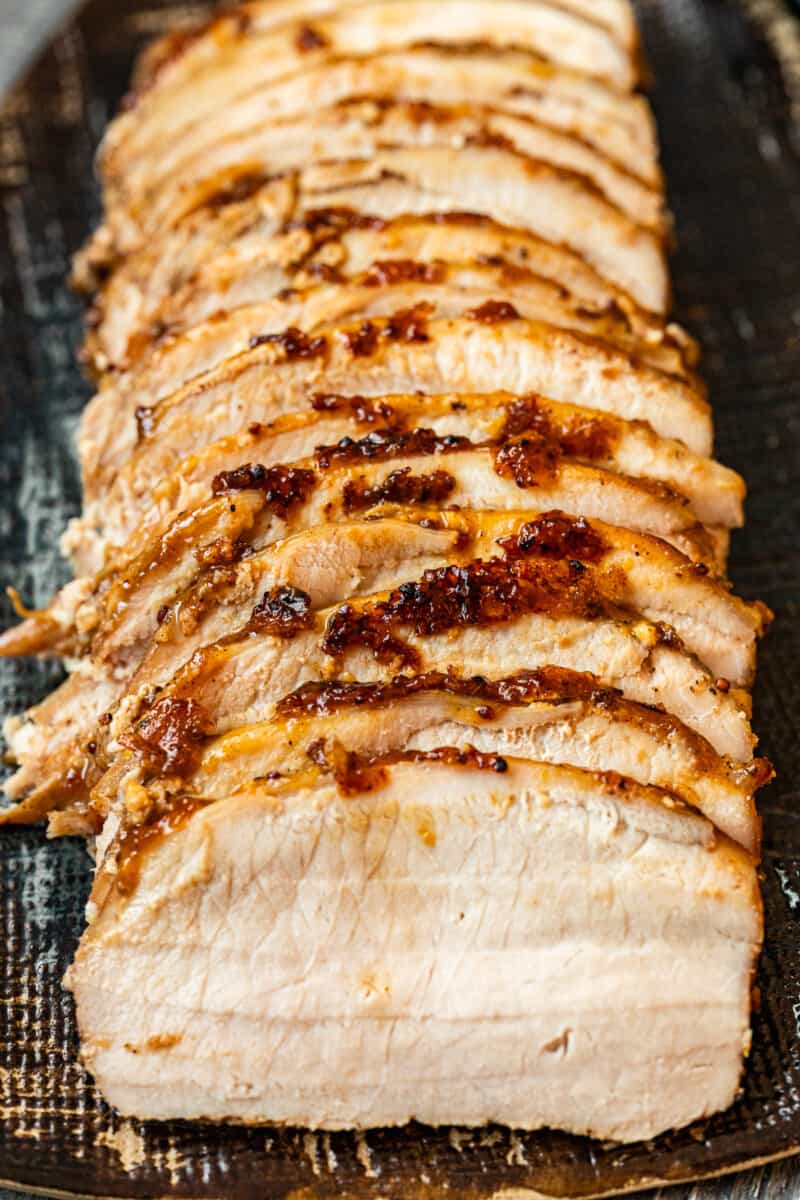
Internal Temperature for Pork (Pork Tenderloin, Ham, or Pulled Pork): 145-205F
Pork is pretty straightforward and self explanatory when dealing with internal temperatures. The safe minimum temp for pork is 145F, and it rarely needs to be cooked more than that.
Recommended Pork Temps:
| Type | Temperature |
|---|---|
| Pork Chops, Pork Tenderloin, Ham: | 145F |
| Ground Pork: | 160F |
| Pulled Pork: | 205F |
| Pre-cooked Ham: | 165F |
Pork is often overcooked, making it seem like it’s a more difficult meat to cook correctly. But it’s totally possible to get juicy, well-cooked pork! Just watch your temps carefully and remove from the heat about 3-5 degrees under your desired temp of 145F, then let it rest.
Here are 8 of our favorite Pork Recipes:
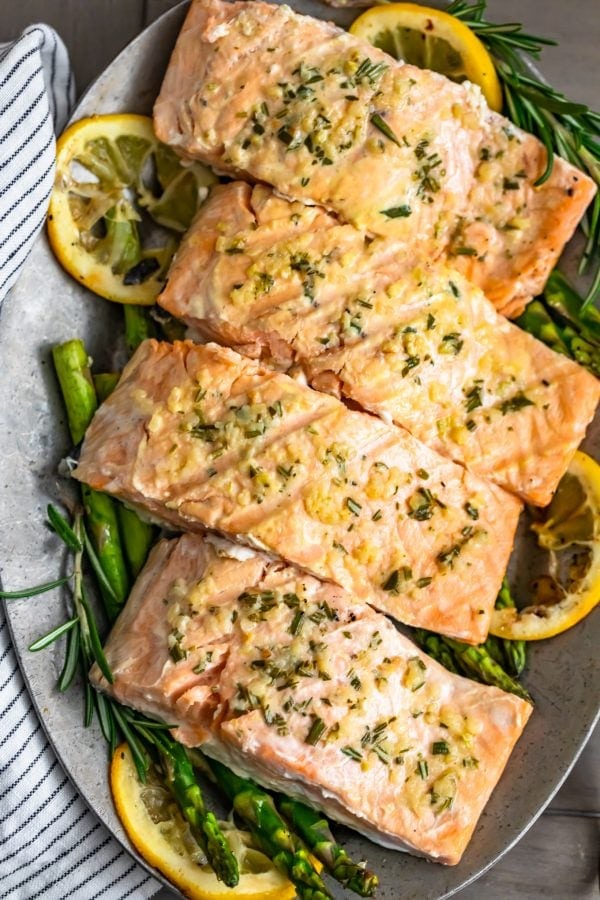
Internal Temperature for Salmon and Seafood: 125-145F
You’re probably going to get conflicting opinions on the perfect internal temperature for salmon, fish, and seafood. The safe minimum internal temp for salmon and fish is 145F, but it is safe to cook it a bit less.
Recommended Seafood Temps:
| Type | Temperature |
|---|---|
| Salmon and Fish: | 125-145F |
| Seafood (Lobster, Crab, Shrimp, etc): | Cook until opaque |
I prefer to cook salmon around 130-135F. Salmon cooked to an internal temperature of 125F is safe to eat and is considered “medium rare”. You’ll get tender, flakey fish while being fully cooked!
All fish follows the same rules as salmon. Other seafood, like lobster, crab, scallops, or shrimp, has less specific rules. You really just need to cook these foods until they become opaque, rather than checking the temp.
QUICK TIP: When testing the internal temperature of salmon, be sure you’re taking the temp at the thickest part of the fillet. Remove from the heat when the fish reads about 2 degrees under your desired temperature as it will continue to cook.
Here are our 10 Favorite Salmon Recipes:
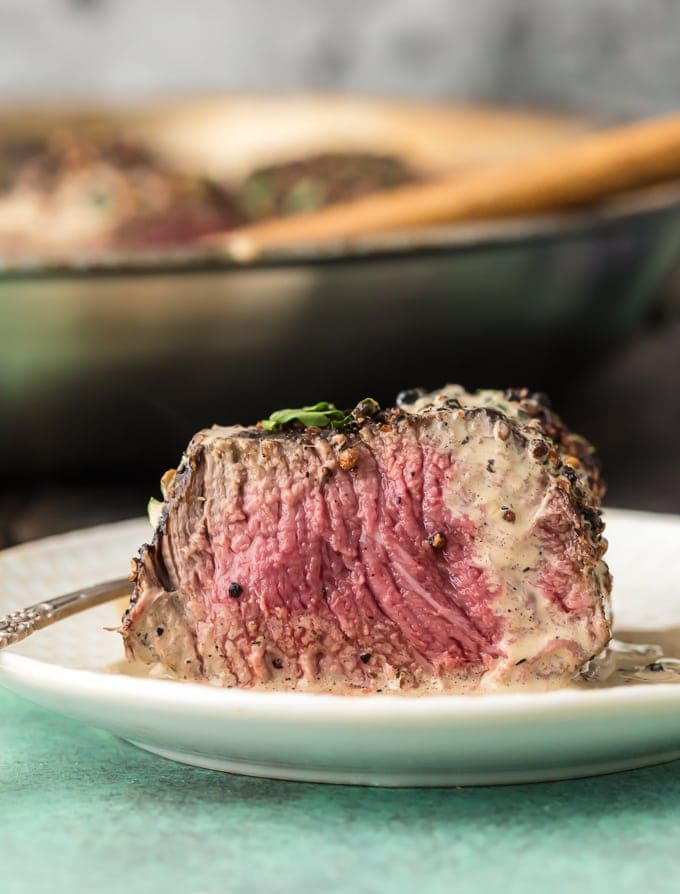
Internal Temperatures for Steak: 125-160F
I’ve saved the best for last, STEAK! If we go to a fancy restaurant, you better believe I’m going to order the Steak Filet, Medium or Medium Rare, every single time. I just love a perfectly cooked steak. There’s nothing better!
It’s generally recommend to cook beef steaks to a minimum temp of 140F (medium rare). But people like their steaks done at different temps, so there is definitely a range here. Keep your instant read meat thermometer handy!
Recommended Steak Temps:
| Doneness | Temperature |
|---|---|
| Rare: | 130-135F |
| Medium-Rare: | 140F |
| Medium: | 150-155F |
| Well-Done: | 160-165F |
Here are some of our favorite Steak Recipes:
All that’s left is to leave you with a simple and perfect way to grill steak every time. I hope this guide to meat internal temperatures helped, and be sure to print off the FREE printable meat temp chart to keep in your kitchen for easy access. We are so glad you’re here. Enjoy!
Click HERE to get your free printable Meat Temperature Guide for Cooking!
Get Ready to Cook!
Find more cooking guides, resources, how-tos, and printables to keep in your kitchen!
Cooking Guides

